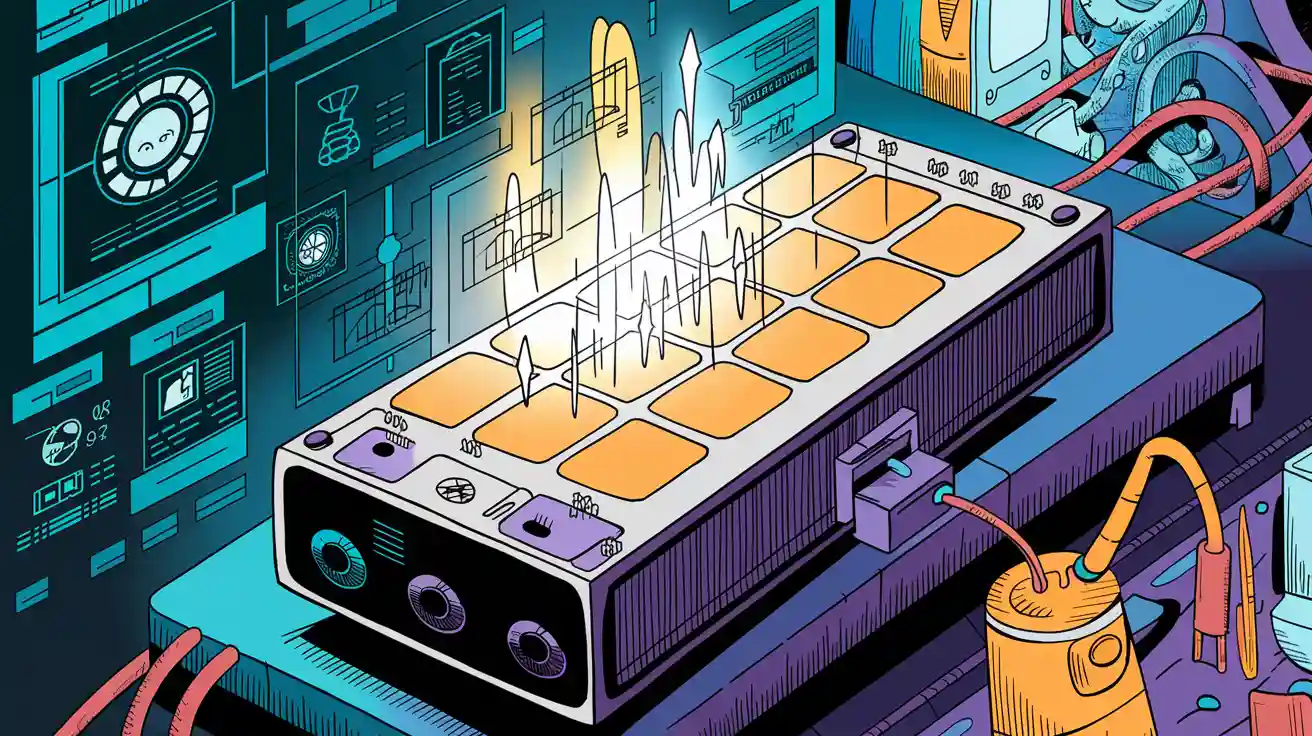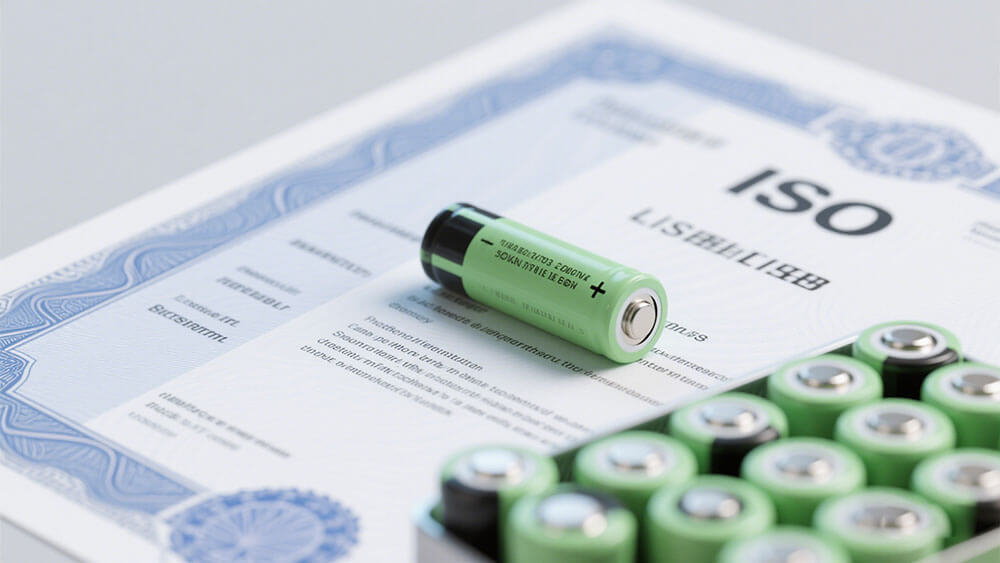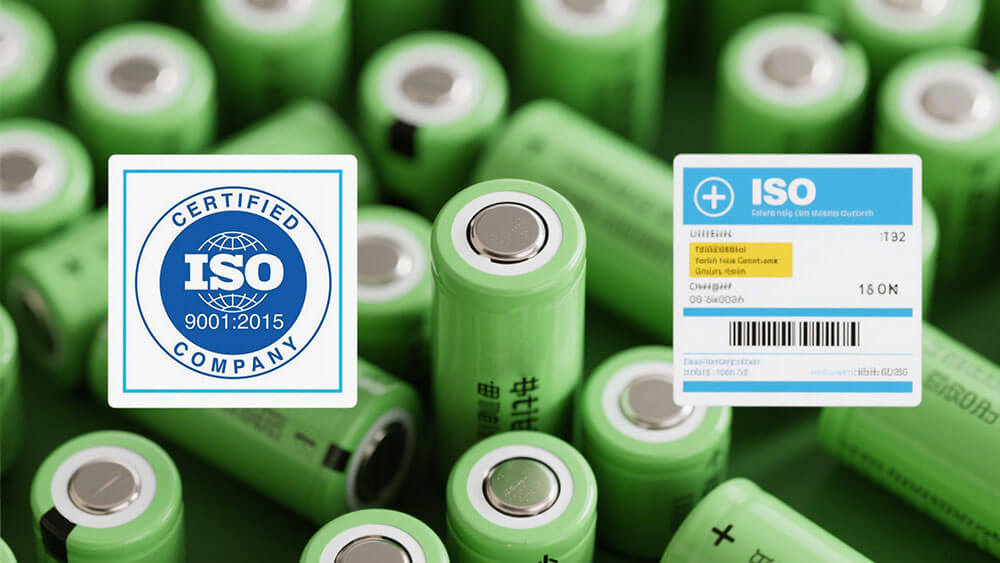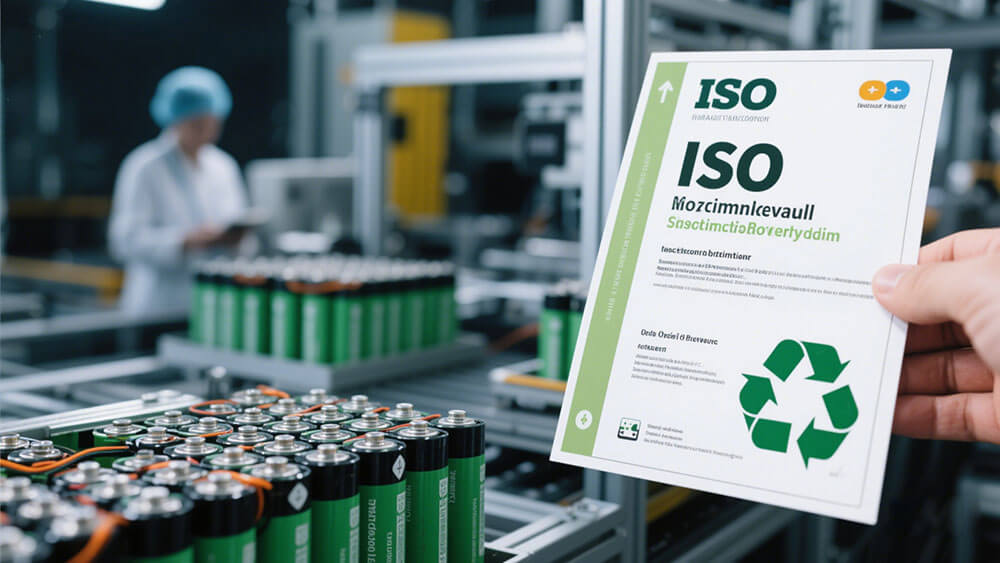Contents

Lithium-ion batteries power industries such as medical, robotics, and infrastructure systems. Ensuring their safety and efficiency is paramount. ISO standards provide a global framework to achieve reliability and performance. By 2025, advancements like electric aircraft and sustainable energy transitions will redefine these standards. Adhering to ISO lithium battery requirements safeguards businesses in this evolving landscape.
Key Takeaways
ISO rules keep lithium-ion batteries safe and working well. They are important for fields like healthcare and robots.
Following ISO rules makes products better, lowers dangers, and gains customer trust.
Knowing new ISO rules helps companies stay competitive and follow laws.

Part 1: Overview of ISO Standards and Their Importance
1.1 What Are ISO Standards and Why Do They Matter?
ISO standards are globally recognized frameworks that ensure safety, quality, and efficiency across industries. For lithium-ion batteries, these standards provide essential guidelines to meet safety requirements, improve performance, and maintain reliability. They address critical aspects such as environmental management, functional safety, and quality control. By adhering to ISO certifications like ISO 9001 and ISO 14001, businesses can streamline processes, reduce risks, and enhance customer confidence.
In industrial applications, ISO standards play a pivotal role. They ensure that products meet stringent safety and quality benchmarks, which is especially vital for sectors like medical devices, robotics, and infrastructure. These industries rely on lithium-ion batteries with high energy density and long cycle life, such as NCM (160–270 Wh/kg, 1000–2000 cycles) and LiFePO4 (100–180 Wh/kg, 2000–5000 cycles). Compliance with ISO standards for battery manufacturing ensures these batteries perform reliably under demanding conditions.
1.2 The Role of ISO Lithium Battery Standard about Safety and Performance
ISO standards directly impact battery safety and performance by addressing potential hazards and ensuring consistent quality. For example, ISO 6469 specifies safety requirements for electrically propelled vehicles, focusing on preventing electrical hazards. The standards protect users and enhance the reliability of lithium-ion batteries in critical applications like security systems and transportation infrastructure.
1.3 Benefits of ISO Standards for Battery Manufacturing and Consumers
ISO compliance offers significant advantages for businesses and consumers. It ensures consistent product quality, regulatory adherence, and environmental sustainability. For manufacturers, certifications like ISO 45001 improve workplace safety, while ISO 14001 aligns operations with global sustainability goals. These benefits translate into enhanced reputation, cost savings, and competitive advantage.
Benefit | Description |
|---|---|
Enhanced Product Quality | Reduces defects and ensures customer satisfaction. |
Regulatory Compliance | Helps meet regulations, ensuring market access. |
Improved Environmental Sustainability | Encourages green practices, reducing environmental impact. |
Increased Safety | Minimizes risks for employees and end-users. |
Competitive Advantage | Builds trust and credibility in the market. |
Cost Savings | Improves efficiency and reduces waste. |
For industries like consumer electronics and robotics, ISO certifications ensure that lithium-ion batteries meet stringent safety and performance requirements. This compliance fosters trust and reliability, essential for maintaining a competitive edge in the global market.

Part 2: Key ISO Standards for Lithium-Ion Batteries
2.1 ISO 9001: Quality Management Systems
ISO 9001 establishes a framework for quality management systems, ensuring consistent product quality and efficient production processes. For lithium-ion battery manufacturers, this standard emphasizes traceability, accountability, and customer-focused improvements. By adhering to ISO 9001, you can minimize defects, enhance customer satisfaction, and reduce the risk of faulty products.
Metric | Description |
|---|---|
Consistent Quality | Batteries manufactured under strict guidelines for uniform performance. |
Reliable Production Process | Documentation and refinement of production methods reduce defects and inefficiencies. |
Customer-Focused Improvements | Active gathering of customer feedback to enhance product design and performance. |
Traceability and Accountability | Systems in place to quickly identify and resolve issues if they arise. |
Lower Risk of Faulty Products | Strict testing procedures significantly reduce chances of defective batteries. |
2.2 ISO 14001: Environmental Management Systems
ISO 14001 focuses on environmental management, helping businesses reduce their ecological footprint. For battery production, this standard ensures compliance with environmental regulations and promotes sustainable practices. Manufacturers adopting ISO 14001 can achieve significant reductions in CO2 emissions and energy consumption.
Statistic Description | Value |
|---|---|
CO2 emissions per kWh of batteries produced | <1 kg |
Percentage of energy needs met by solar array | 80% |
By integrating environmental management systems, you can continuously assess environmental impacts and implement actions to achieve net-zero goals.
2.3 ISO 26262: Functional Safety for Automotive Applications
ISO 26262 addresses functional safety requirements for automotive systems, including lithium-ion batteries. This standard ensures that battery packs meet stringent safety benchmarks to prevent hazards like thermal events.
Vehicle Condition | Cause of Malfunction | Possible Hazard | ASIL |
|---|---|---|---|
Running Speed < 10 km/h | Overcharging battery pack | Thermal event risk | A |
Running Speed > 10 – 50 km/h | Overcharging battery pack | Thermal event risk | B |
Running Speed > 50 km/h | Overcharging battery pack | Thermal event risk | C |
Compliance with ISO 26262 enhances battery safety and reliability, making it indispensable for automotive applications.
2.4 ISO 12405: Test Procedures for Electrically Propelled Road Vehicles
ISO 12405 outlines test procedures for lithium-ion battery packs used in electrically propelled vehicles. It evaluates performance, reliability, and safety under various conditions. Abuse testing, high-power testing, and custom test plans ensure batteries meet specific requirements.
Characteristic | Description |
|---|---|
Test Procedures | Specifies procedures for lithium-ion battery packs and systems used in electrically propelled road vehicles. |
Performance | Enables determination of essential performance characteristics. |
Reliability | Assesses the reliability of battery systems under various conditions. |
Abuse Testing | Includes tests to evaluate the battery’s response to abusive conditions. |
Comparison | Assists users in comparing test results of different battery packs or systems. |
Custom Test Plans | Allows configuration of dedicated test plans based on customer and supplier agreements. |
High-Power Testing | Specifies tests for high-power battery packs and systems. |
2.5 IEC 62133: Safety Requirements for Rechargeable Lithium-Ion Batteries
IEC 62133 is a critical standard for ensuring the safety of rechargeable lithium-ion batteries. It includes updated testing protocols, such as cell teardown and X-ray examination, to address advancements in battery technology. These measures enhance safety assessments and ensure compliance with global safety requirements.
2.6 ISO 17546: Design and Verification for Space Vehicle Batteries
ISO 17546 focuses on the design and verification of lithium-ion batteries for space applications. This standard ensures that batteries used in space vehicles meet rigorous performance and safety criteria. By adhering to ISO 17546, manufacturers can guarantee reliability in extreme conditions, making it essential for aerospace industries.

Part 3: Anticipated Updates and Trends in ISO Standards for 2025
3.1 Emerging Technologies and Their Impact on Standards
Emerging technologies are reshaping the landscape of ISO certifications. Digital transformation is driving advancements in blockchain and AI, which streamline certification processes and enhance transparency. For instance, AI can optimize audits, making them faster and more accurate, while blockchain ensures trust in the declaration of conformity. Cloud-based systems are also gaining traction, enabling real-time collaboration and remote audits. These innovations are particularly relevant for the battery manufacturing industry, where efficiency and traceability are critical.
The rise of industry-specific standards reflects the need for tailored compliance. For example, ISO 13485 addresses medical devices, while ISO/IEC 27001 focuses on information security. As lithium-ion batteries power medical equipment and robotics, these specialized standards ensure safety and reliability. The integration of such technologies into ISO standards will likely redefine compliance requirements by 2025.
3.2 Stricter Environmental and Safety Regulations
Stricter environmental and safety regulations are influencing updates to ISO standards. ISO 14001:2025 introduces enhanced flexibility, risk-based thinking, and clearer documentation requirements. These changes align with the growing emphasis on sustainability in the battery manufacturing industry. For example, the integration of “planning of change” ensures that strategic decisions minimize environmental impact.
Key Changes in ISO 14001:2025 | Description |
|---|---|
Enhanced Flexibility | Better integration with other business functions. |
Risk-Based Thinking | Systematic assessment of environmental risks. |
Documented Evidence | Clearer guidance on compliance documentation. |
ISO 9001 now considers climate change as a relevant issue, encouraging organizations to address environmental expectations. These updates ensure that lithium-ion batteries meet evolving safety requirements while supporting global sustainability goals.
3.3 Global Harmonization of Standards for Lithium-Ion Batteries
Global harmonization of ISO standards is becoming a priority. As lithium-ion batteries power critical applications like transportation and security systems, consistent safety requirements across regions are essential. Harmonized standards simplify compliance for manufacturers operating in multiple markets, reducing costs and ensuring product reliability. For example, aligning ISO 45001 with regional workplace safety regulations enhances employee protection during battery production.
This trend also supports the adoption of high-energy-density batteries like NCM (160–270 Wh/kg) and LiFePO4 (100–180 Wh/kg). By standardizing testing and certification processes, global harmonization fosters innovation and accelerates market entry for advanced battery technologies.
3.4 Focus on Sustainability and Recycling in ISO Certifications for Battery Manufacturing
Sustainability and recycling are becoming central to ISO updates. A recent study highlights the environmental benefits of circular supply chains for battery-grade cathode materials. Recycling processes reduce the environmental footprint and support life cycle assessments, emphasizing the need for updated ISO standards.
ISO 14001 and ISO 45001 play a pivotal role in promoting sustainable practices. For example, recycling initiatives in the battery manufacturing industry align with these standards, reducing waste and conserving resources. By 2025, ISO standards will likely include more robust guidelines for recycling, ensuring that lithium-ion batteries contribute to a circular economy.
ISO standards ensure lithium-ion battery safety, efficiency, and sustainability across industries. Staying updated with evolving standards helps you maintain compliance and competitiveness.
FAQ
1. How can ISO standards improve the battery safety?
ISO standards define safety protocols for manufacturing and testing. By following these guidelines from Large Power, you can minimize risks like thermal runaway and ensure reliable battery performance.
2. Are ISO certifications mandatory for lithium-ion battery manufacturers?
ISO certifications are not legally required. However, obtaining them demonstrates your commitment to quality, safety, and sustainability, which can enhance your market reputation and customer trust.
3. What industries benefit most from ISO lithium battery?
Industries like medical devices, robotics, transportation and infrastructure rely heavily on ISO-compliant batteries. These standards ensure safety, reliability, and performance in critical applications.
Tip: Partnering with ISO-certified suppliers can streamline compliance and improve product quality.





